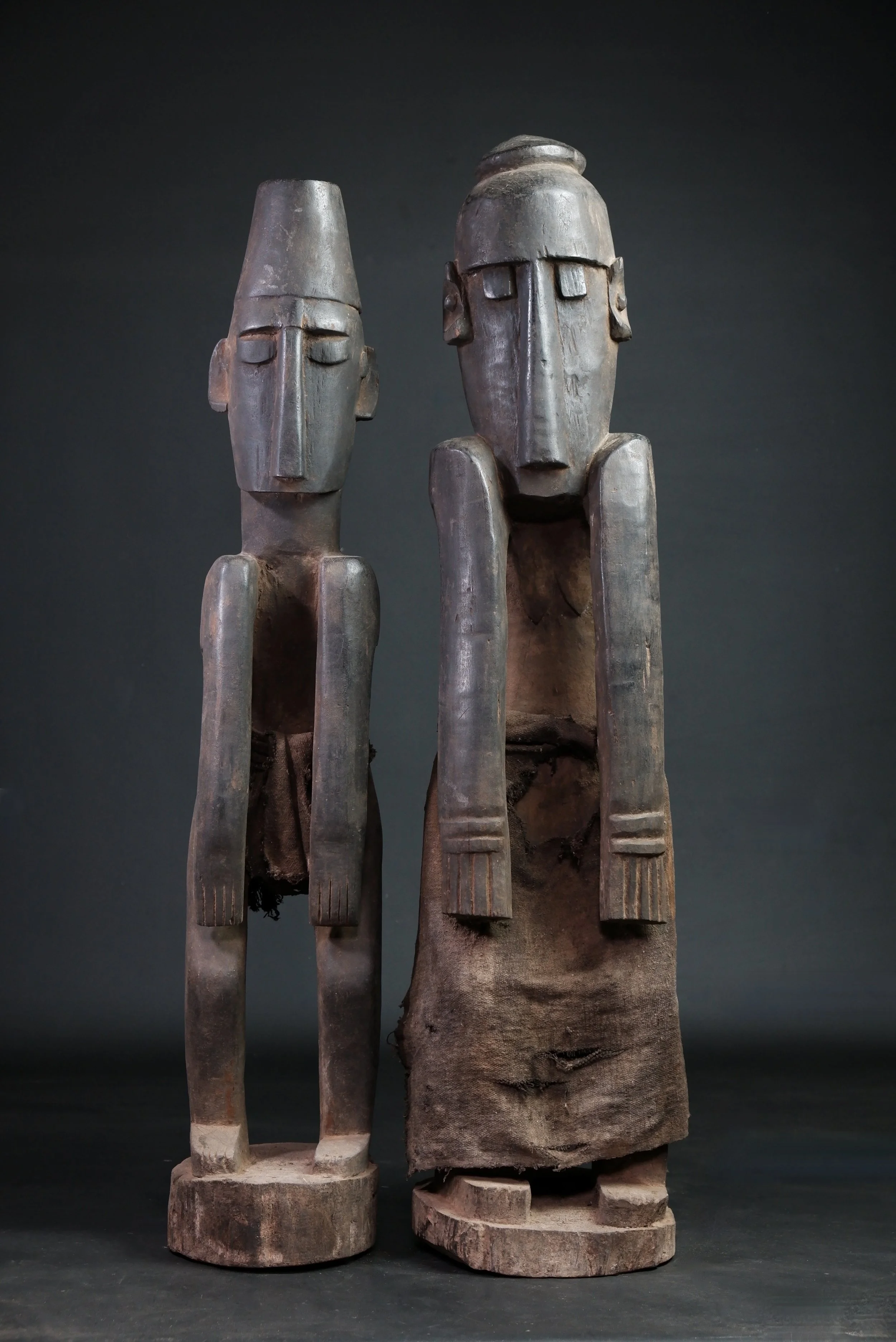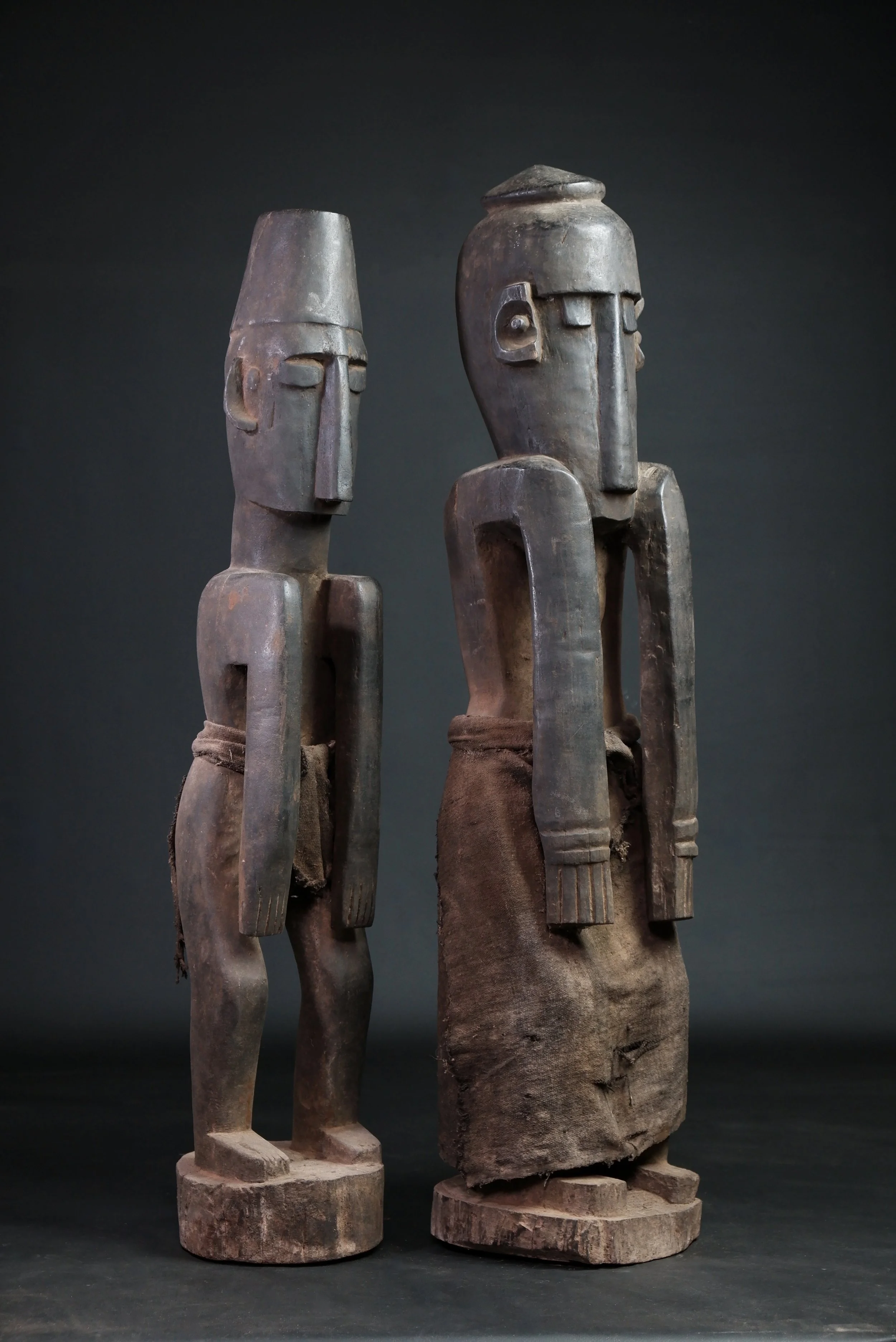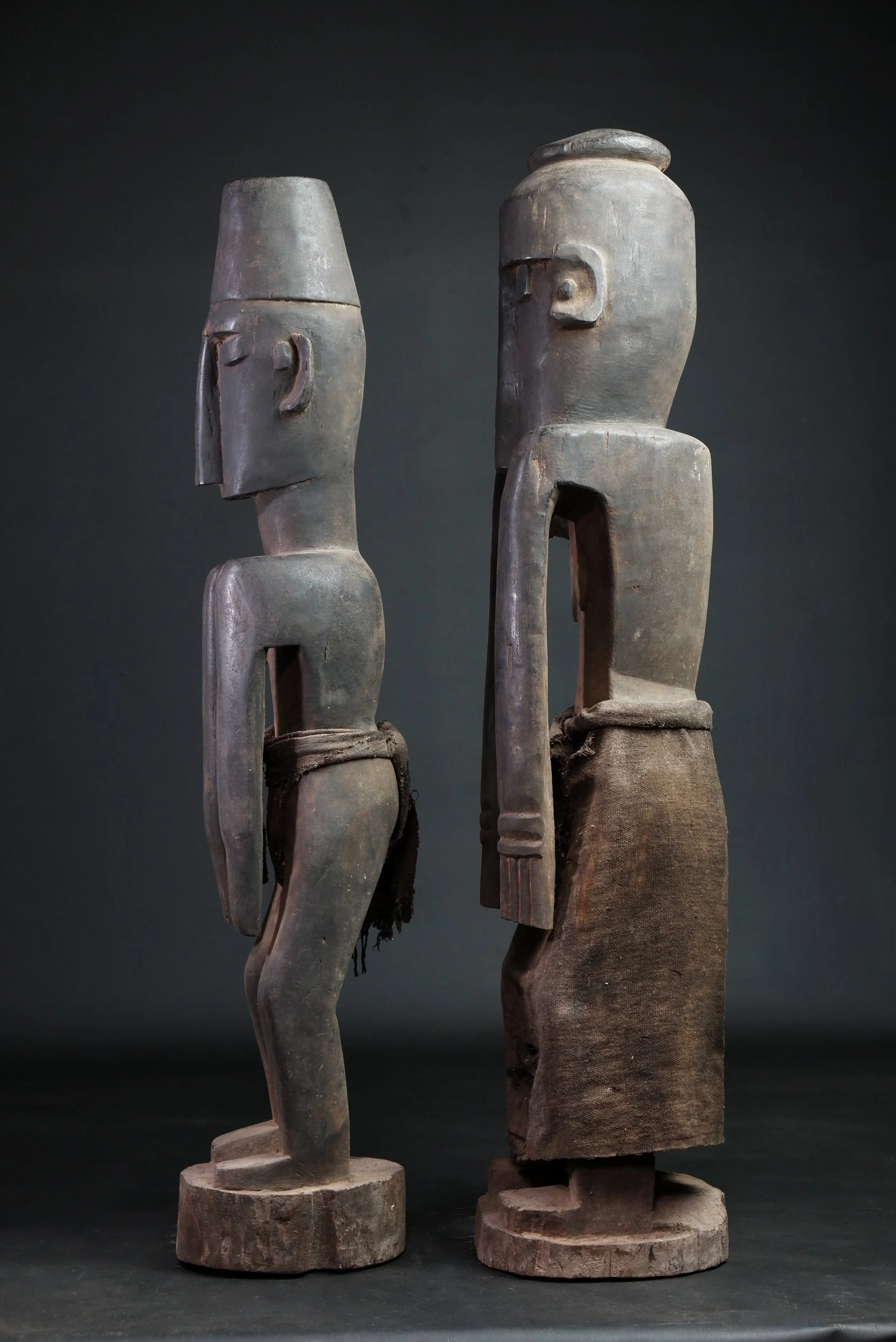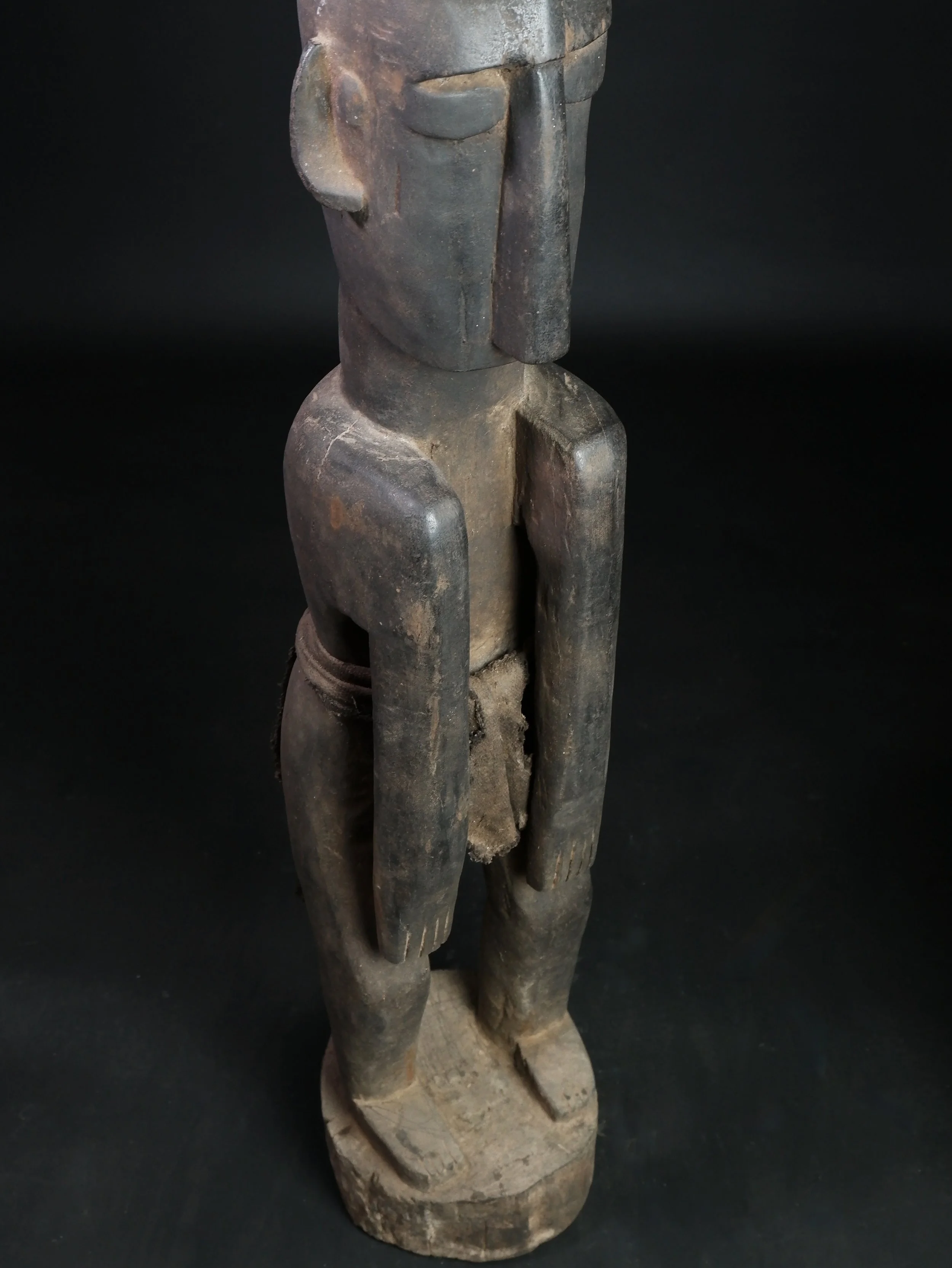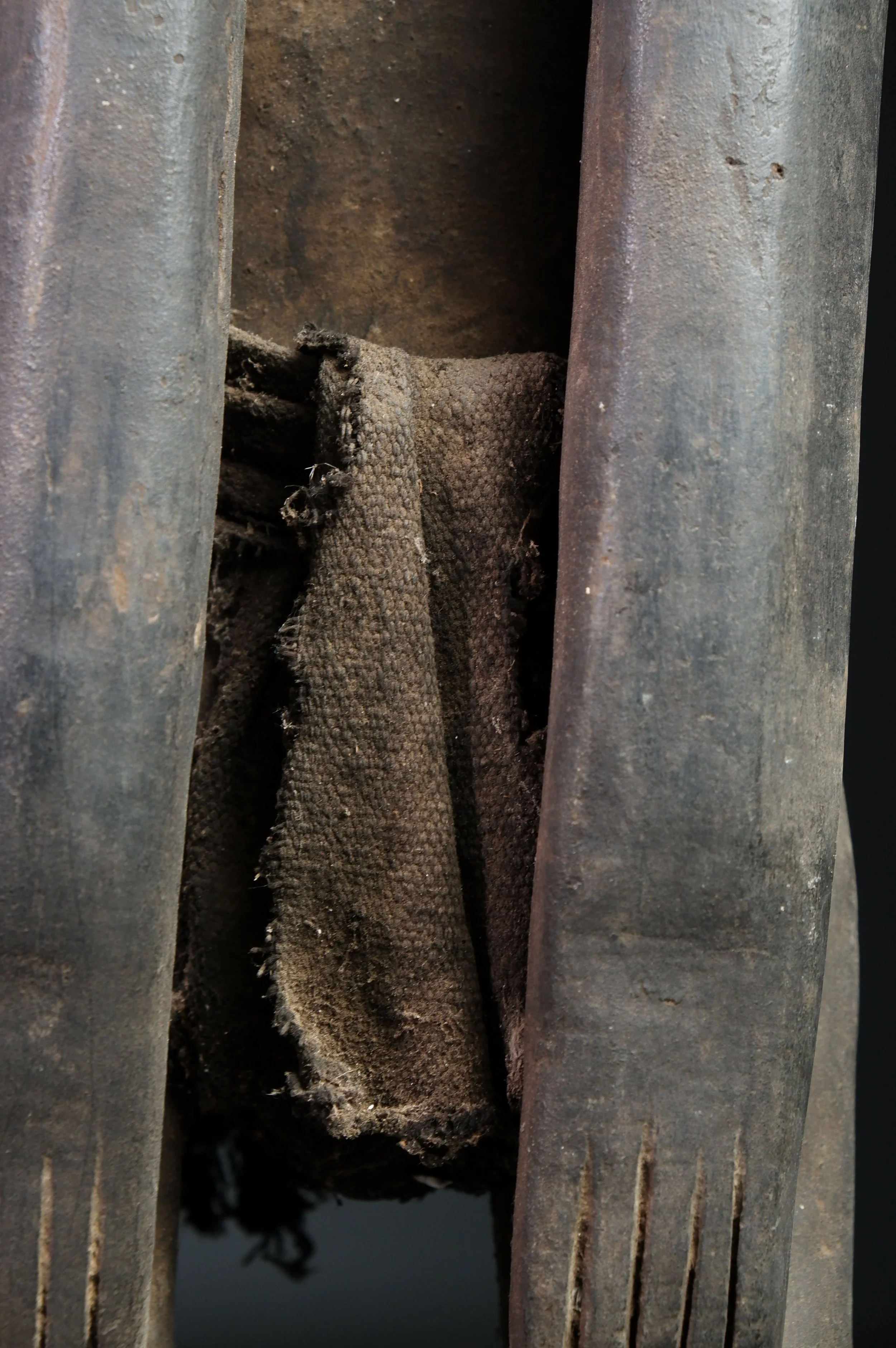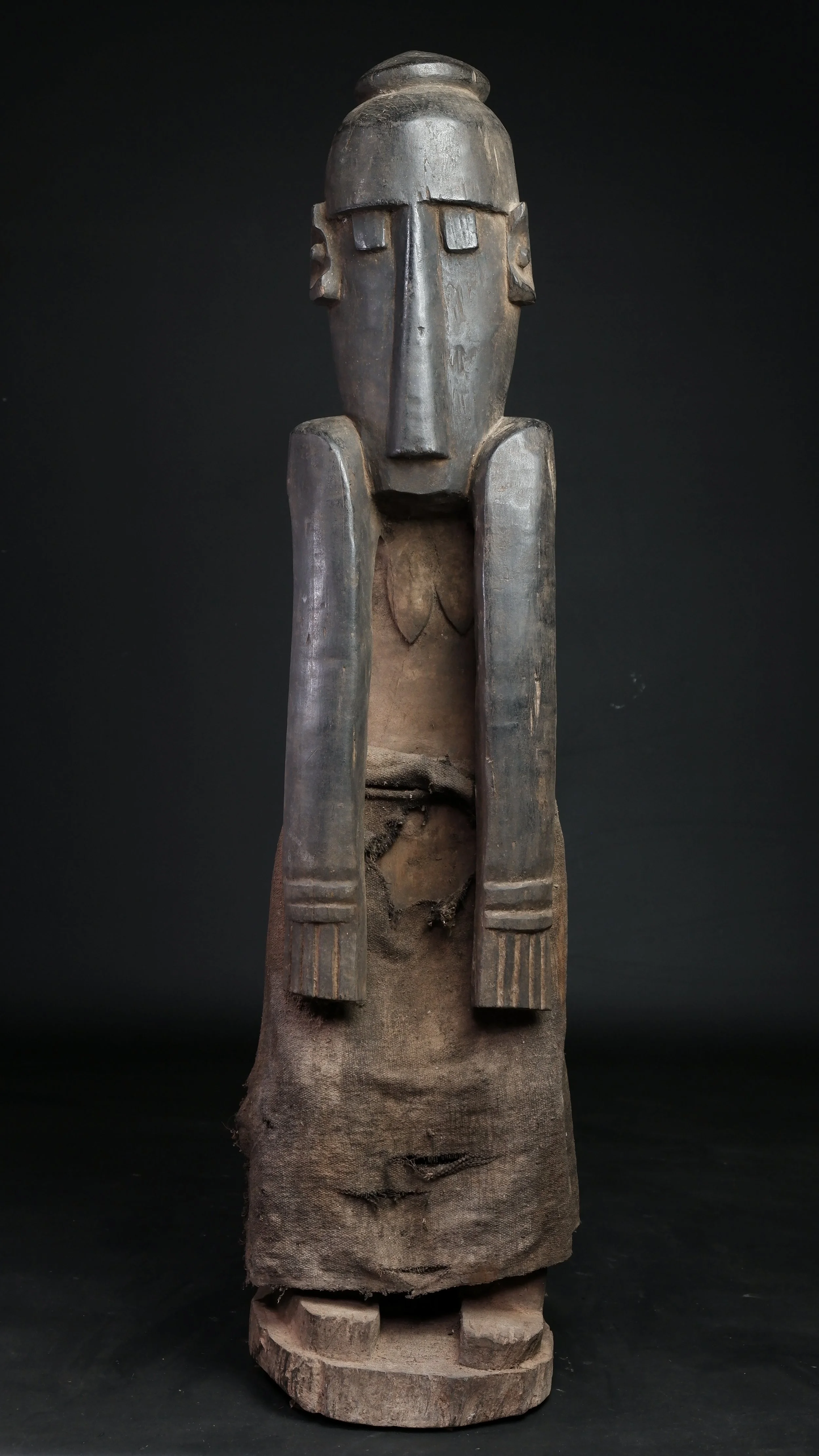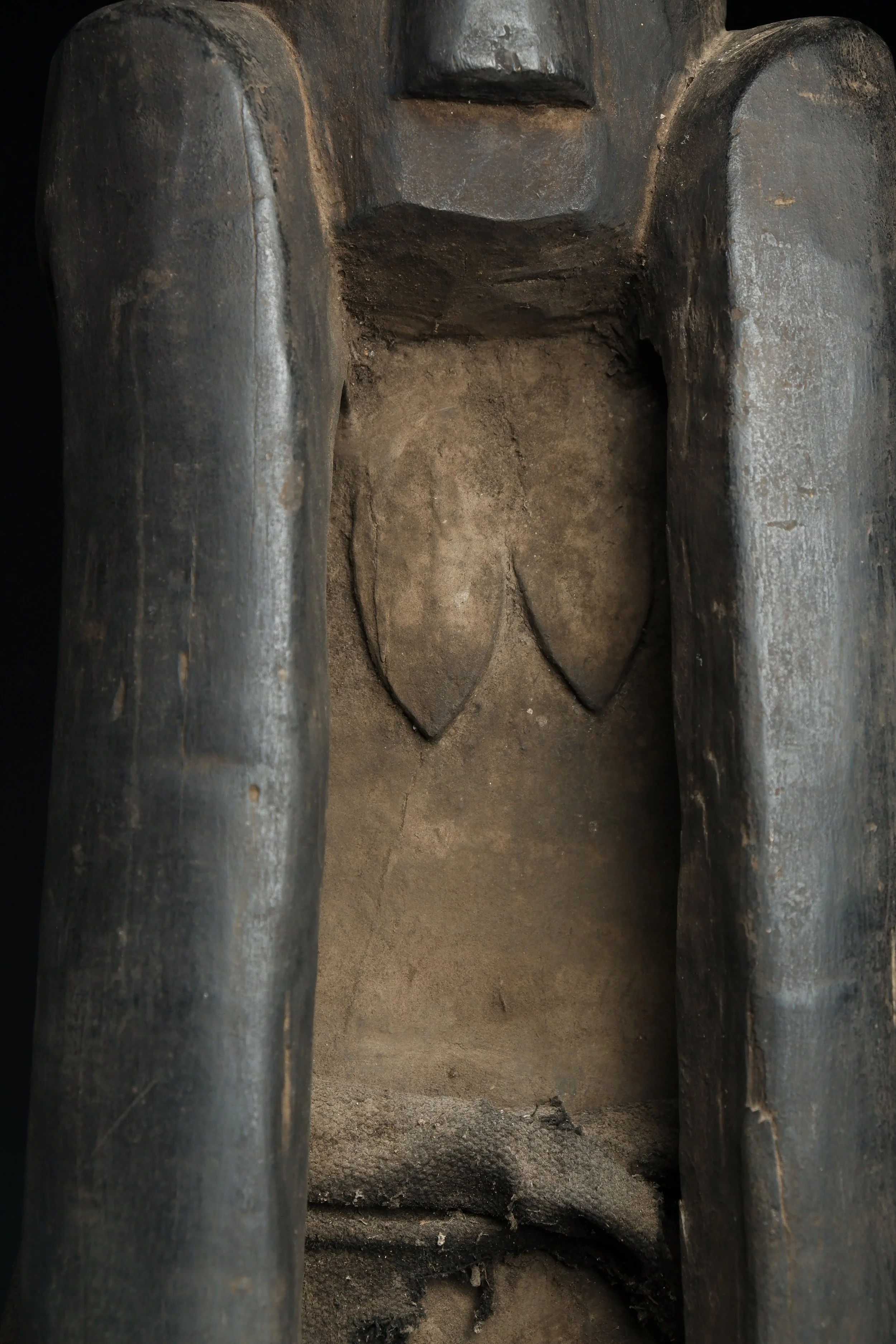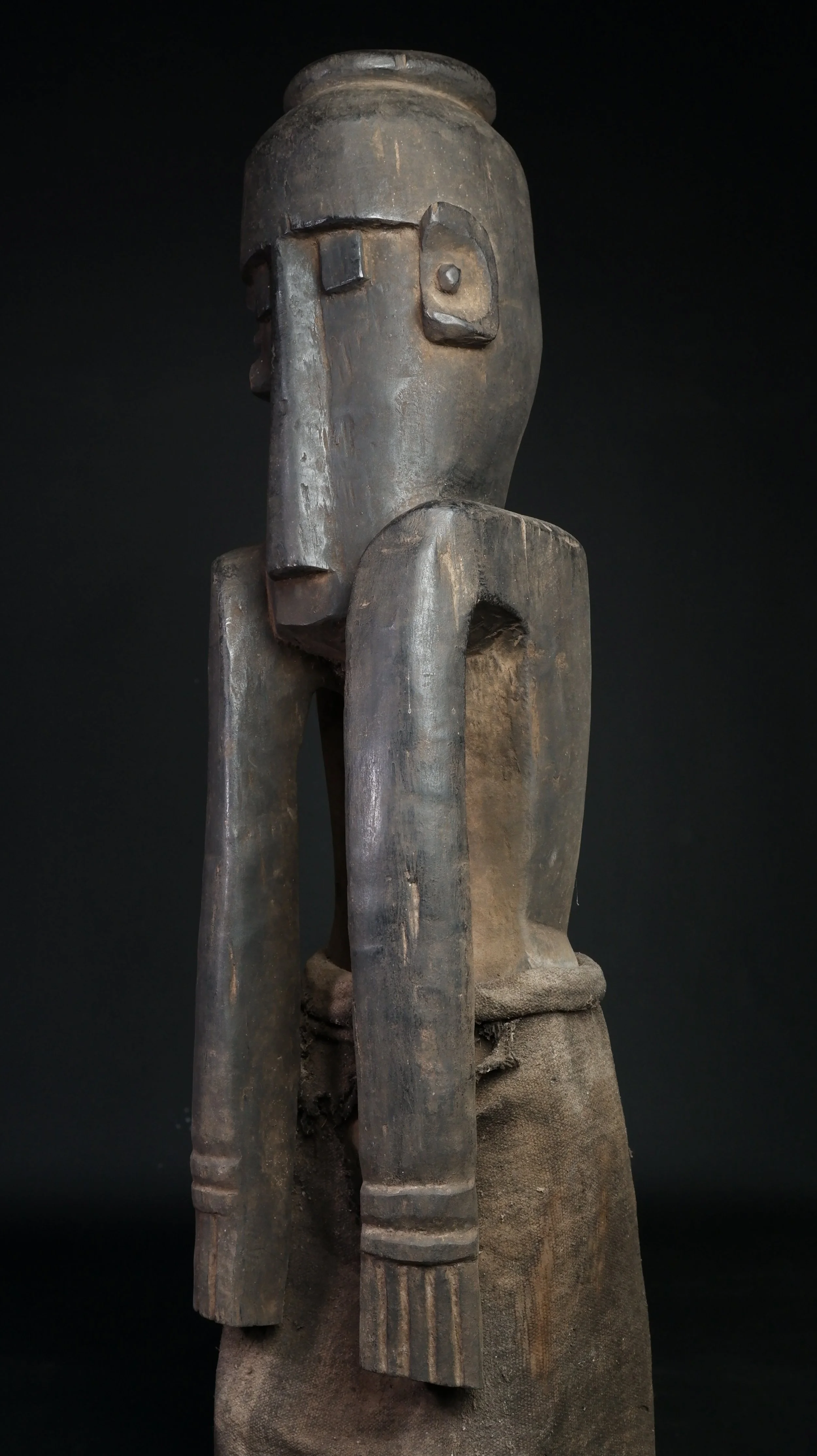Antique Ancestor Couple statues -Large- ATAURO East Timor figures #oceanic art
Antique Ancestor Couple statues -Large- ATAURO East Timor figures #oceanic art
SOLD
MEASUREMENTS: cm 84; 88 // 33" 34" weight: 11 Kg; 5.3
Majestic, museum-quality pair of Atauro statues, strikingly large in size, adorned with their cloth skirts, and bearing a well-worn patina of age.
Notably, these statues manifest pronounced distinctions. The male counterpart, with his marginally slighter build and an elevated headgear, arguably signifies distinct gender roles or hierarchical strata within the society. Conversely, the female figure, denoted by her scarcely defined bust and more stocky body, with her head ensconced between her arms, implies potential connotations of symbolic or cultural import.
According to tradition, prior to the conversion of the people of Atauro to Christianity, they revered a divine couple known as Baku-Mau and his female counterpart, Lebu Hmoru, as fertility deities. Worshipping these local idols was associated with well-being and prosperity. Several remarkable and ancient carved wooden statues of this sacred pair have endured throughout time.
Not much of Atauro's historical material culture remains, apart from the aforementioned statues, a collection of talismans, various sets of outdoor funerary sculptures, a limited assortment of ceremonial shields, and practical items like adorned hand axes. An exception to this is a common category of statues called "itara," which were suspended from the "branches" of forked posts behind homes or along "the spine of the male end of the house."
Each family typically owned a pair of these effigies, representing and fostering a harmonious connection with their ancestors. The more prominent the family, the greater the number of itara displayed. These figures were invoked with the names of revered ancestors to impart wisdom and blessings to their descendants.
Notable examples of Atauro's artistry can be found in esteemed institutions such as The Dallas Museum of Art, The Eskenazi Museum of Art at Indiana University, Yale University Art Gallery, de Young Museum, Musée du Quai-Branly, and Musée Barbier-Mueller. Scholarly exploration of Atauro's material culture is documented in the works of Jorge Barros Duarte and Joanna Barkkman.

